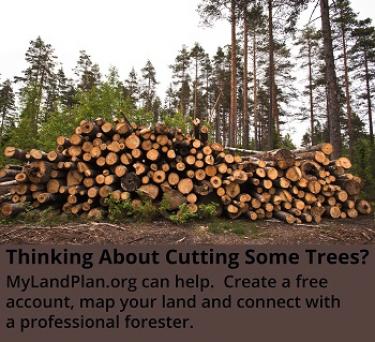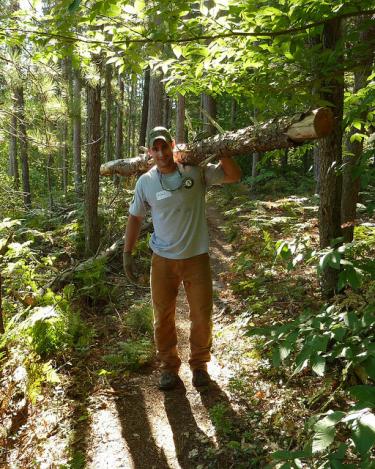The Value of Your Trees
There isn’t a simple formula for the value of your trees. What kinds of trees you have, how large and healthy they are, how many you have, whether they’re easy to reach and cut, your local market conditions—all of these factor in to your timber’s value.
It’s also based on where the trees go when they leave your land. Very large, choice trees are used for veneer logs (the tree is sliced or peeled to produce veneer) or sawtimber (the tree is sawed into lumber). Smaller, lower-quality trees may be sold for pulpwood (used to produce paper and other products) or firewood. Higher-quality trees fetch better prices, because of the products they yield.
What does this mean for you? It means that some of the factors in your timber’s value are within your control, and some of them aren’t.
But there is one decision you can control that can make a big difference in your timber sale: how you sell it.
Selling Stumpage vs. Logs
The two basic ways to sell timber are either as stumpage (standing timber) or as logs or other finished products. Each way has its pros and cons.
Log sales involve harvesting and processing your own timber and then selling the finished products that come from it: veneer, sawtimber, pulpwood, etc. You must arrange for your own logging, either cutting the trees yourself or contracting a logger to do it, and for the timber's handling and hauling.
This method can increase your profits, because there's less time and cost involved for your buyer. But it carries several risks. First, logging is dangerous work, and it often requires expensive specialized equipment. Second, any mistakes in cutting or handling your timber could destroy their value and leave you without a product to sell. If you choose this method, there are a few tips that can help protect your timber and your profits:
- Have a market for your product before you invest your time and money to harvest it. Put time into finding a buyer first, and don't proceed without a written contract.
- Know your buyer's requirements—the desired timber size, volume, quality, etc.—before you harvest.
- Know your legal responsibilities and get appropriate insurance before hiring workers to cut or process your timber.
- Use the right equipment for the job and take every recommended safety precaution before, during and after your harvest. You can be seriously injured if you don't.
Stumpage means you sell only the standing timber, and leave the harvesting and processing to your buyer. Most private woodland owners choose to sell their timber as stumpage.
There are two types of stumpage sales: “lump sum” or “sale by unit” (also known as "sale-by-scale")
- “Lump sum” means you’re paid in advance in a single payment for all of your trees to be cut, before any harvesting happens. These payments are based on an estimate of the timber volume available in the stand, not the actual volume that’s harvested.
- “Sale by unit” means that the buyer pays you just for the trees that are cut. This requires that the harvested timber be measured by you, your forester, by the logger (if you have complete confidence in the logger), or by the mill, so it’s a little more difficult to administer than a lump sum sale.
Another thing to think about is how you report the income you earn from selling your trees. Be sure to look into the implications for your taxes:
Whether you choose either of the stumpage sale types or a log sale, you will still need to measure your timber. The main measurement buyers
need is volume, but there are a few different ways to calculate that volume.
Trees sold for pulpwood are often measured in cubic feet or cords, where a cord is a stack of wood measuring 8 feet long, 4 feet high, and 4 feet wide.
For larger trees that will become sawlogs or veneer logs, you need to measure the diameter at breast height (DBH) and the merchantable height, which is the number of 8-foot logs that could be cut out of the tree that would have a minimum diameter of 8 inches.
Together, these two numbers plus a "rule" that factors in how the wood is cut can give you the volume of the tree in board feet—that is, the number of board feet of lumber that can be sawn out of it, where a board foot is a piece of wood measuring 1 inch thick, 12 inches wide, and 12 inches long.
As you can see, measuring your trees can get tricky. But a knowledgeable, trusted consulting forester will know the best measurement method for your woods, and will make sure you have accurate figures for your sale.
Once you’ve figured out the value of your timber, you may find yourself a little daunted by the rest of the process too. How do you know if you’ve got a reputable buyer or a good deal? How do you limit the damage to your woods and keep all your trees—the ones for sale and the ones you’ll keep—safe?
The good news is you can protect your woods and yourself from start to finish, while also getting the most value from your harvest. This time-tested set of best practices can help.


